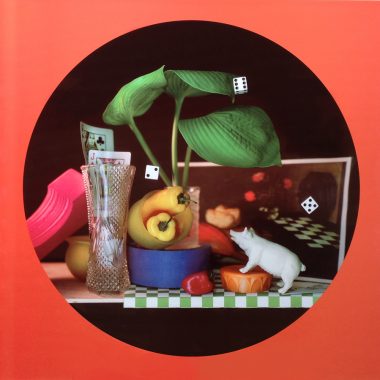By Cheryl Castjohn via NOLA Defender
NoDef’s Cheryl Castjohn reviews Kate Blacklock’s “Still Life/Nightscape,” on view through December 28 at Arthur Roger Gallery (432 Julia Street), as part of this year’s PhotoNOLA.
When you find out that Kate Blacklock uses a scanner for a camera, you react in one of two ways: “Everything is a miracle” or “Nothing is a miracle.” Either you dismiss her photos as an unorthodox divergence from the strict definition of the medium, or you are intrigued by what she might be able to do with a flatbed, office-type scanner. You may look at her subject matter and decide that her “Still Life” or “Nightscape” work is unremarkable, but this would be overlooking many aspects of the work, most of all the strange and wonderful process of how she makes it.
It was Albert Einstein who proposed that there are basically just the two ways to live life. We must assume that the German Jewish scientist whose name has become synonymous with the word “genius” lived like everything was a miracle – he was himself kind of a miracle.
Einstein’s legacy is not only centered around his fierce intellect, but also on his goodness, the perceived notion of his childlike sense of fun. Therefore our notion of genius includes the concept of fun and creativity in its definition. We celebrate the roguish, iconoclastic figure of Einstein who lamented that his learning had been stifled most by his formal education.
The term “genius” was discredited in art around 1971 by critic Linda Nochlin out of concern for the term’s strong historical ties to men, Picasso and Pollock to name some more recent bearers of the “genius” moniker. Nochlin succeeded in removing the term from artistic circles for a good long time. But perhaps instead of declaring an individual an artistic genius – Picasso’s ceramics didn’t necessarily exhibit artistic genius, but his Cubism probably did – perhaps we can instead find genius in specific works and series of works.
Art should be expected to do certain things even when it isn’t expected to depict a recognizable subject. It is not wrong or gauche to hope that art inspires fierce emotion or vividly connect points of logic for the viewer. We can hope that it challenges our prejudices, or force us out of deeply worn pathways of perception.
In the case of Kate Blacklock’s “Still Life’s,” the artist performs another ingenious art function with her scanner bed photography: she forces the mundane out of context and re-organizes it into the magical. Some art somewhere by someone should always, always be doing just that.
In terms of her subject, her “Nightscapes” are particularly tranquil. This is not an easy quality to achieve with such bright, story book color palettes. Her emerald greens and bright orchid lavenders and poppy reds don’t always lend themselves to a placid feeling. Instead, the inky nighttime waters of dream-ponds achieve this silent (and silencing) trick. Standing inside the white gallery walls and involuntarily recollecting the midnight sounds of still water is abundantly charming and just a bit astonishing.
Her “Still Life” are modeled after Dutch vanitas, studies on the impermanence of life and the frivolous nature of goods and possessions. The florid and fluid elements are strong and well-interpreted in Blacklock’s works. They share inspiration with the drawings of Angela Piehl (Antenna Gallery) who sketches intricately detailed works also about luxury and accumulation, but with widely divergent aesthetic properties.
Blacklock’s decaying orchids, strings of pearls and intricate ceramic dishes float amongst cast iron unknowables in layer upon layer of differing gravities and they are especially slick and glossy. The storybook space of Blacklock’s little floating wonders are a dreamlike respite from the dirty, murky pond water of real life and a welcomed escape from the severity of earthbound gravity. But diamonds fade and flowers bloom, and this is the other side of Blacklock’s digitally produced kingdom. Her dye-infused aluminum prints lure the eye with such vivid and perfect color and consume it so thoroughly that the “Nightscape” world could trap us in time, spellbound, floating like her compositions.
There is rampant, childlike curiosity evident in Blacklock’s work, and they just feel like she’s hit a certain stride in the arc of her career. Their gravity and their scrutiny and even their art-historical inspiration are serious and somber, but they feel rambunctious and unbridled even in their depth of perspective. Blacklock’s is the kind of genius strokes which are only ramping up with their inspiration; the free-flowing experimentation and probable countless hours of arranging and lighting take her photos to the next level of joy and accessibility.

